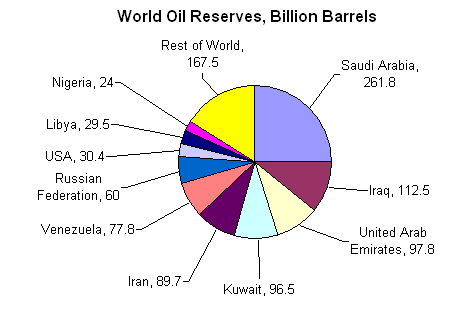Global Oil and Gas Reserves Continue Rising
Posted: 10/08/2014 03:10:35 Edited: 10/08/2014 03:10:35 Clicks: 1398
Italian Eni SPA had already published its thirteenth edition of the World Oil & Gas Review, which was an annual statistic review of global oil and gas production, reserves and consumption, especially focusing on refining industry and oil quality.
According to the new review, global oil and gas reserves in 2013 increased respectively by 0.4% and 1.7%, mainly benefiting from new tight oil area in the U.S. and gas discovered in East Africa.
The U.S. led global oil production growth in 2013. Owing to tight oil production increasing strongly, American oil production increased by 12.2% on year-on-year basis. Sharp increasing of American oil production neutralized oil production decline in Iran and Syria. In 2013, oil production in Iran and Syria reduced by 9.8% and 35.5%, compared with the same period of 2012.
Data of Eni showed that global oil and gas consumption rose by 1.4% and 1%. Among that, American demand growth was highlighted.
Although European consumption was still weak, oil demand in countries of OEEC showed growth in 2013 which was the first growth since economic crisis. For non-OEEC countries, Chinese demand was top. China had already become the second largest global oil consumer. European refining industry was faced with deep reasonable adjustment. In the past few years, Europe had already stopped oil refinery distillation capacity of about 2 million barrels per day. However, European refining industry still had excess capacity. Under the circumstance of demand decline, excess capacity would be expanded.
Availability of low-cost oil is improving competitive power of American refining industry. Asia-Pacific region and Middle East are the largest newly increased global oil refinery distillation capacity investment regions. Because of demands in those regions are growing gradually, and the tendency will be maintained.
According to the new review, global oil and gas reserves in 2013 increased respectively by 0.4% and 1.7%, mainly benefiting from new tight oil area in the U.S. and gas discovered in East Africa.
The U.S. led global oil production growth in 2013. Owing to tight oil production increasing strongly, American oil production increased by 12.2% on year-on-year basis. Sharp increasing of American oil production neutralized oil production decline in Iran and Syria. In 2013, oil production in Iran and Syria reduced by 9.8% and 35.5%, compared with the same period of 2012.
Data of Eni showed that global oil and gas consumption rose by 1.4% and 1%. Among that, American demand growth was highlighted.
Although European consumption was still weak, oil demand in countries of OEEC showed growth in 2013 which was the first growth since economic crisis. For non-OEEC countries, Chinese demand was top. China had already become the second largest global oil consumer. European refining industry was faced with deep reasonable adjustment. In the past few years, Europe had already stopped oil refinery distillation capacity of about 2 million barrels per day. However, European refining industry still had excess capacity. Under the circumstance of demand decline, excess capacity would be expanded.
Availability of low-cost oil is improving competitive power of American refining industry. Asia-Pacific region and Middle East are the largest newly increased global oil refinery distillation capacity investment regions. Because of demands in those regions are growing gradually, and the tendency will be maintained.

